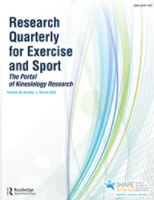Garcia-Tabar I1,2, Rampinini E3, Gorostiaga EM1.
1, Government of Navarre; 2, University of the Basque Country (UPV/EHU); Human Performance Laboratory, Mapei Sport Research Centre, Olgiate Olona, VA, Italy.

ABSTRACT
Purpose: The association between an overlooked classical Lactate Threshold (LT), named “Minimum Lactate Equivalent” (LEmin), with Maximal Lactate Steady State (MLSS) has been recently described with good MLSS prediction results in endurance-trained runners. This study aimed to determine the applicability of LEmin to predict MLSS in lower aerobic-conditioned individuals compared to well-established blood lactate-related thresholds (BLTs).
Method: Fifteen soccer players [velocity at MLSS (MLSSV) 13.2 ± 1.0 km·h-1; coefficient of variation (CV) 7.6%] conducted a submaximal discontinuous incremental running test to determine BLTs and 3-6 constant velocity running tests to determine MLSSV.
Results: LEmin did not differ from conventional LTs (p > .05) and was 24% lower than MLSS (p < .001; ES: 3.26). Among LTs, LEmin best predicted MLSSV (r = 0.83; p < .001; SEE = 0.59 km·h-1). There was no statistical difference between MLSS and estimated MLSS using LEmin prediction formula (p = .99; ES: 0.001). Mean bias and limits of agreement were 0.00 ± 0.58 km·h-1 and ±1.13 km·h-1, respectively. LEmin best predicted MLSSV (r = 0.92; p < .001; SEE = 0.54 km·h-1) in the pooled data of soccer players and endurance-trained runners of the previous study (n = 28; MLSSV range 11.2-16.5 km·h-1; CV 9.8%).
Conclusion: Results support LEmin to be one of the best single predictors of MLSS. This study is the sole study providing specific operational regression equations to estimate the impractical gold standard MLSSV in soccer players by means of a BLT measured during a submaximal single-session test.
Res Q Exerc Sport. 2019 Dec
PMID: 31479401 DOI: 10.1080/02701367.2019.1643446